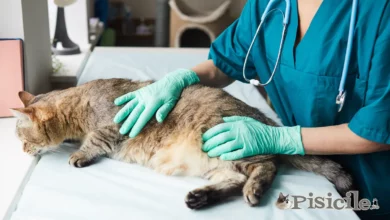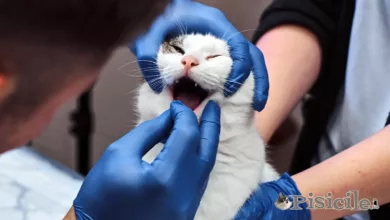
Allergies are more common among humans, but cats are not exempt from this problem either. Cat skin allergies are exaggerated reactions of the immune system to certain substances in the environment or in the diet. These allergies can cause a variety of distressing symptoms and affect your cat's quality of life.
If you have a cat whose skin has undergone changes, it is very possible that he is dealing with a skin allergy. It is very important to determine which substances cause the allergy in order to determine the best treatment.
Subject
Causes of skin allergies in cats.
Cats can develop skin allergies to various substances, including some substances that cause allergies in humans.
Pollution and cigarette smoke
Pollution and other substances in the environment can be included among the common allergens that can affect the sensitive skin of cats. Air pollution can contain fine particles and chemicals that can irritate the skin and trigger allergic reactions. Also, cigarette smoke (including electronic cigarettes – vapes) or other chemicals in the air can have a negative impact on the skin of sensitive cats.
In addition, chemicals in cleaning products, detergents, disinfectants, perfumes and other substances in the environment can also be sources of skin irritation and allergies in cats.
Pollen is one of the causes of skin allergies in cats
Pollen is a significant factor in cat skin allergies. During the pollination season, pollen can be a source of allergy for cats, causing itching and inflammation of the skin.
Pollen is carried by the wind and can end up on your cat's fur and skin during the pollination season. For cats that are sensitive to certain types of pollen, contact with it can cause an allergic reaction. One of the first manifestations of pollen allergy is intense itching of the skin. The cat may begin to scratch excessively in an attempt to relieve the itching sensation, which can lead to skin damage and injury.

Mites
Dust mites are small organisms, invisible to the naked eye, that can be found in dust, soil and various environments. These tiny parasites can trigger allergic skin reactions in cats following exposure to them.
When the cat comes into contact with mites or their excretion products, the cat's immune system can overreact, causing allergic symptoms to appear. These allergic reactions can include severe itching, inflammation, redness and swelling of the skin.
Managing skin mite allergies often involves a combination of preventative measures and treatment. These may include reducing your cat's exposure to mites by cleaning and vacuuming the home regularly, using anti-mite products, and administering anti-allergy or anti-inflammatory medications under the supervision of a veterinarian.
Food, a potential cause of skin allergies in cats
Food can be an important cause of skin allergies in cats. Some cats can develop allergic reactions to certain ingredients in their food, such as certain animal proteins or grains.
Here's a breakdown of how foods can cause cat skin allergies:
Animal proteins: Some cats may be sensitive to certain animal proteins found in their food, such as those from chicken, beef, fish or other protein sources. The cat's immune system can overreact to these proteins, triggering allergic skin reactions. It is important to note that food allergies in cats are not always related to the quality or freshness of the food, but rather to the cat's individual sensitivity to certain ingredients.
Cereals and other ingredients: Certain grains, such as wheat, corn, or rice, as well as other ingredients used in cat food, such as preservatives or artificial colors, can also cause allergic skin reactions. Cats can develop sensitivity to these ingredients, which can cause allergic skin symptoms.
Symptoms of food allergies: Food allergies in cats can produce a variety of skin symptoms, such as intense itching, redness, inflammation, swelling, or skin irritation. The cat may begin to scratch excessively or rub against the furniture to try to relieve the discomfort caused by the allergy.
Diagnosis and treatment: Diagnosing food allergies in cats usually involves a process of eliminating possible allergens from the cat's diet and monitoring skin reactions. Treatment may involve changing the cat's diet to exclude identified allergens and introducing hypoallergenic or diet foods. Anti-allergy or anti-inflammatory medications may also be prescribed to manage allergic skin symptoms.
Symptoms of skin allergies in cats
Cats can show a variety of symptoms of skin allergies, including:
- Intense itching and excessive rubbing of the skin.
- Redness, swelling or skin irritation.
- Loss of hair or the appearance of bald areas.
- Skin injuries such as scratches or open wounds.
- Possible secondary skin infections as a result of injury and excessive scratching.
Diagnosis and treatment of cat skin allergies
Diagnosis of skin allergies in cats often involves clinical examination of the skin and the animal's medical history. Sometimes it is necessary to rule out other dermatological conditions before confirming the allergy. Treatment may include avoiding allergens, administering anti-allergy or anti-inflammatory medications, and/or changing the cat's diet to eliminate possible allergens.
Also read: Chronic Otitis in Cats. The cause of excessive ear scratching
If you suspect that your cat is affected by an allergy, it is advisable to take it to the vet. Through complex analyses, the doctor will determine the substances to which the cat is allergic and the appropriate treatment.



